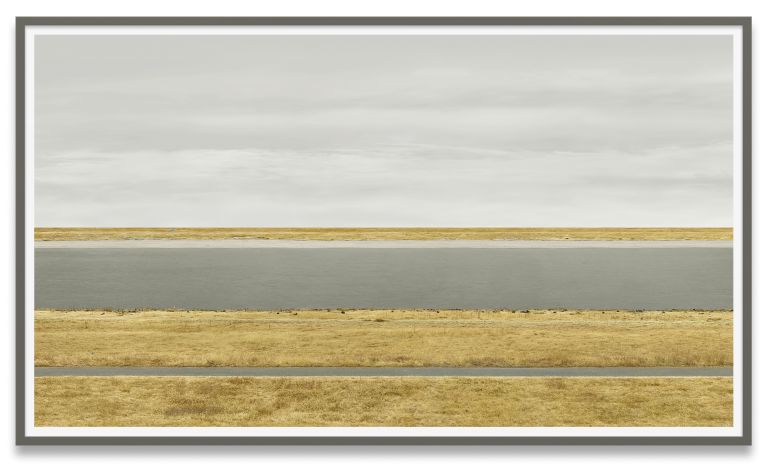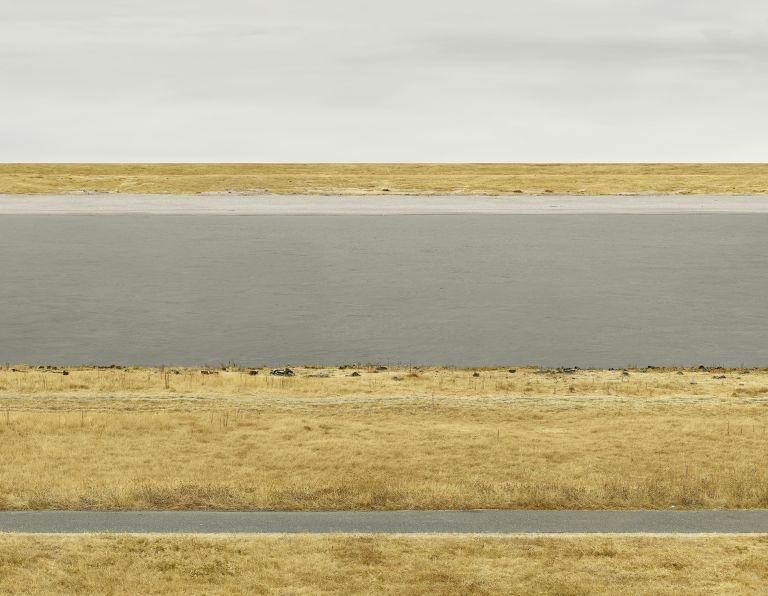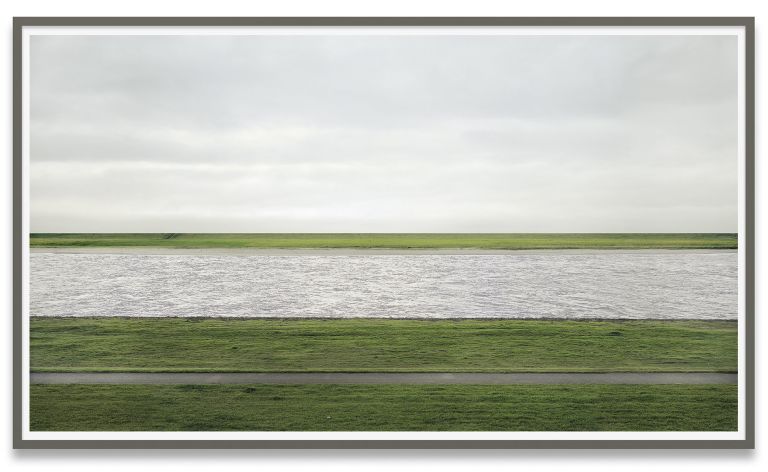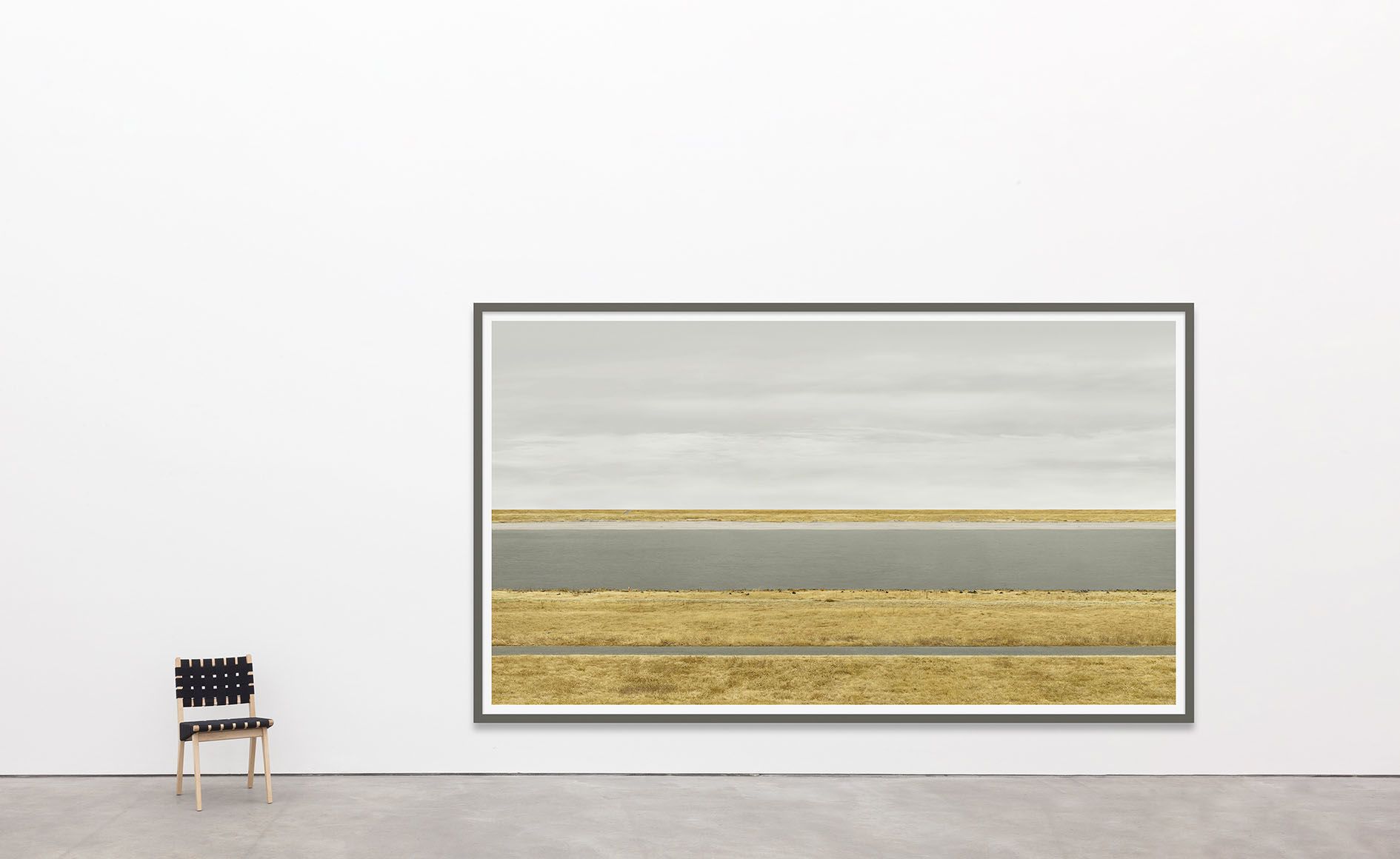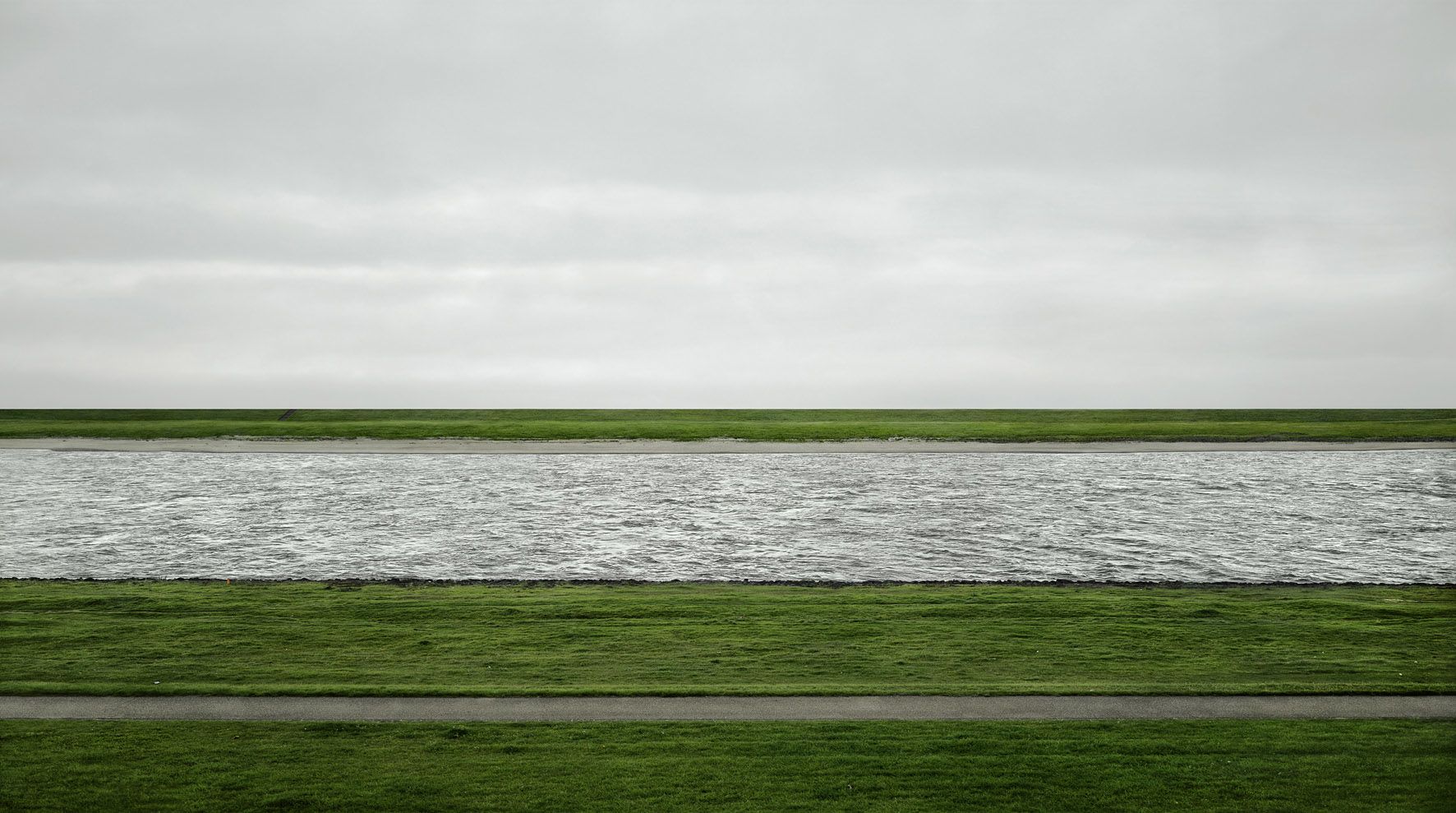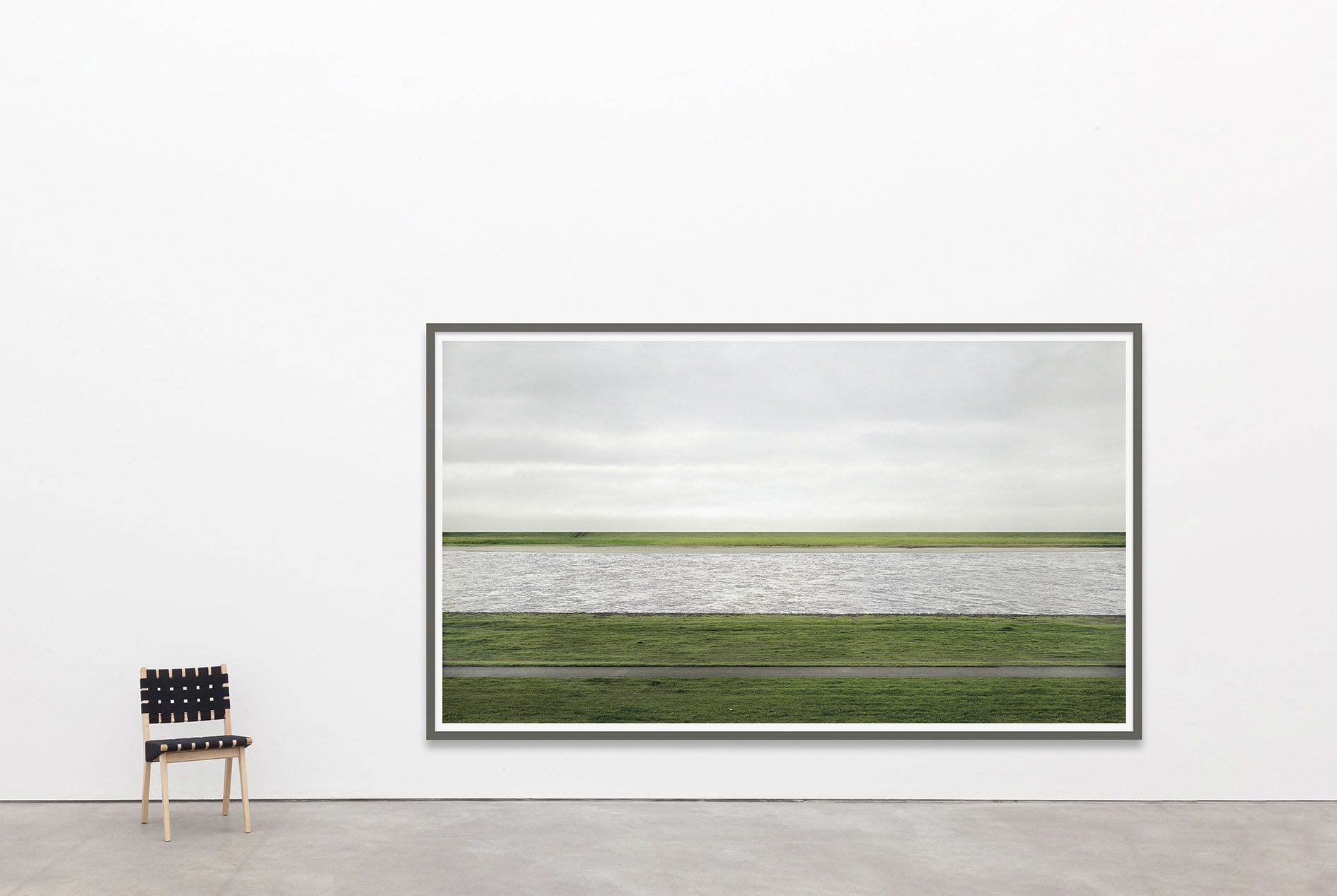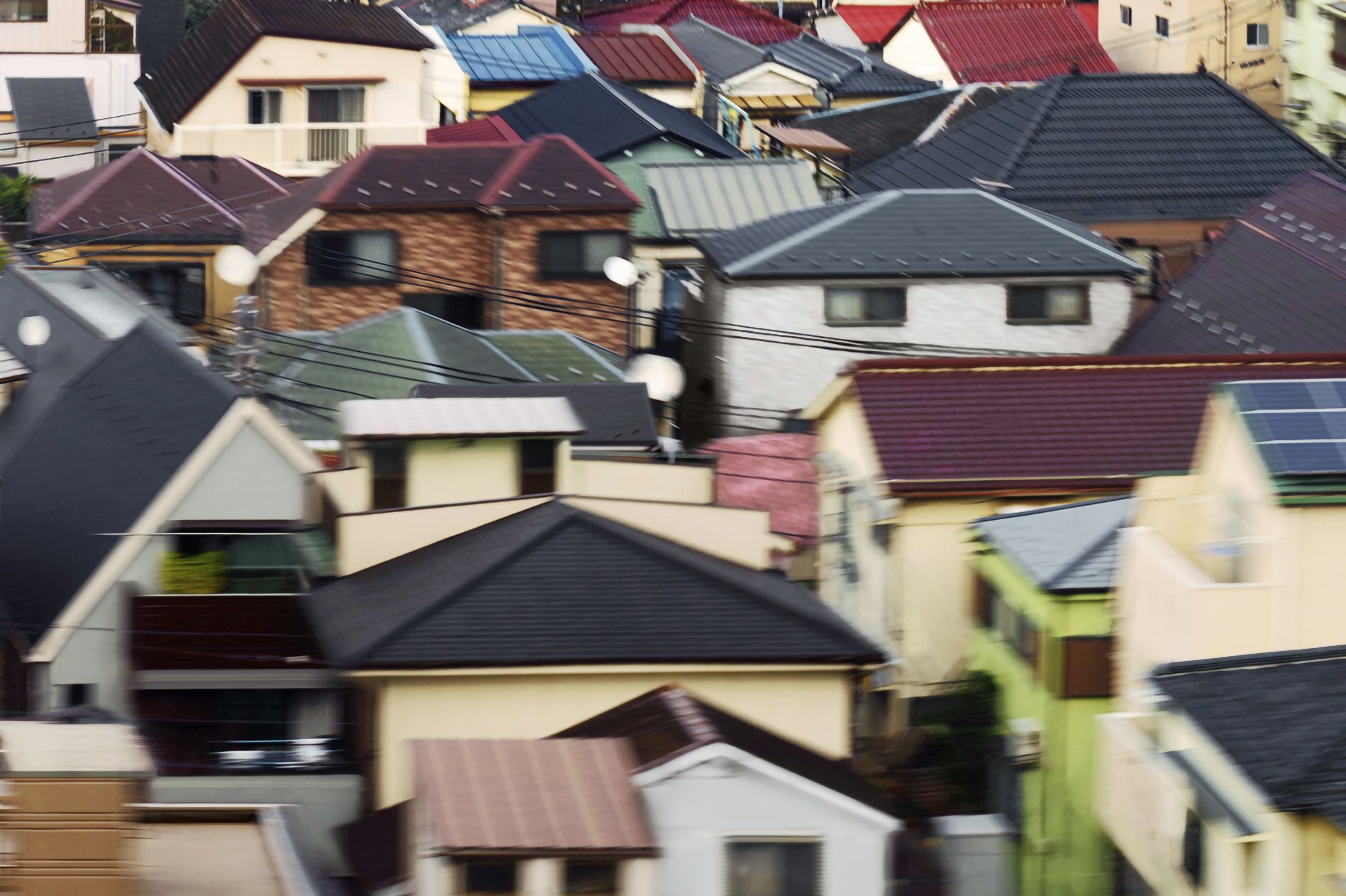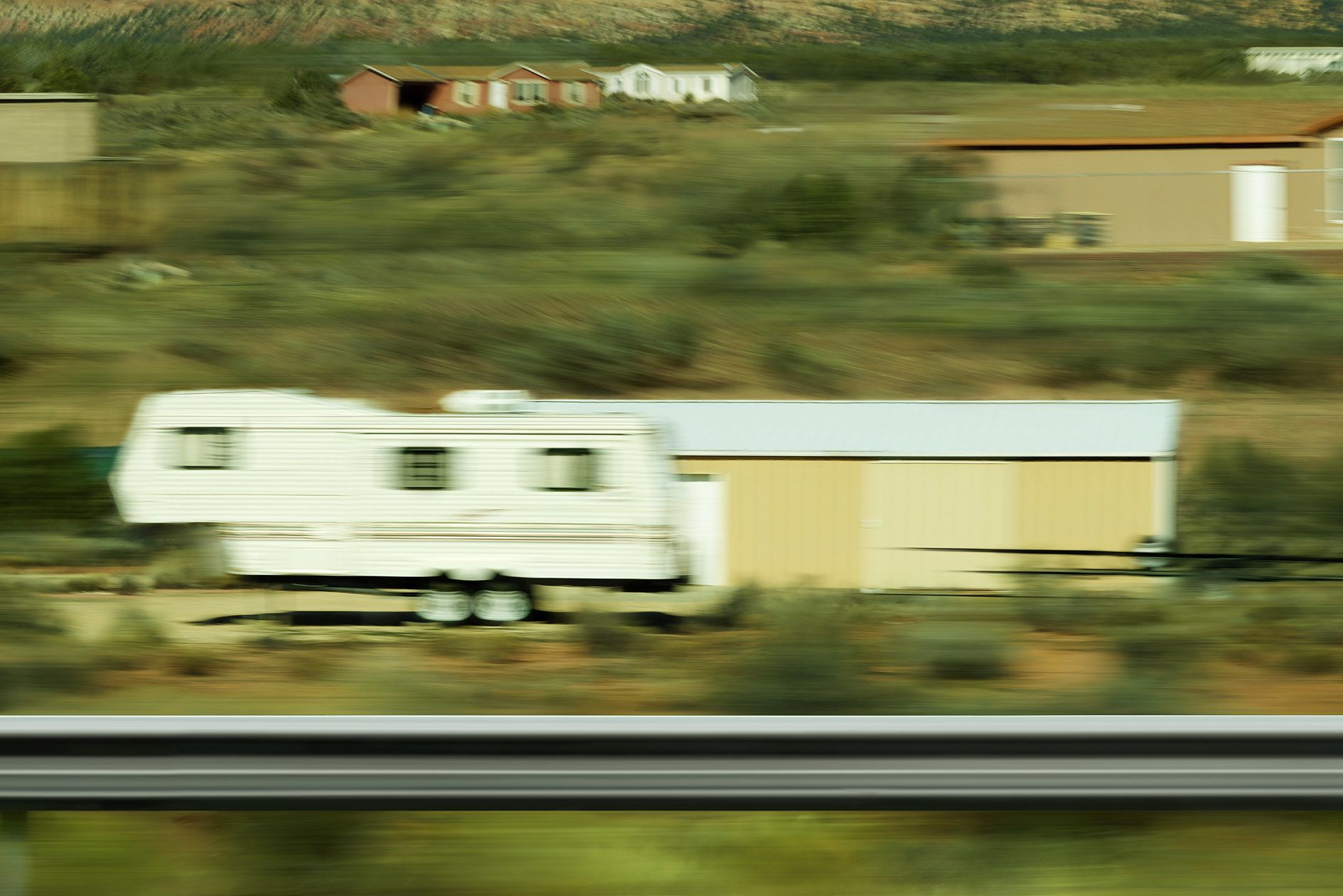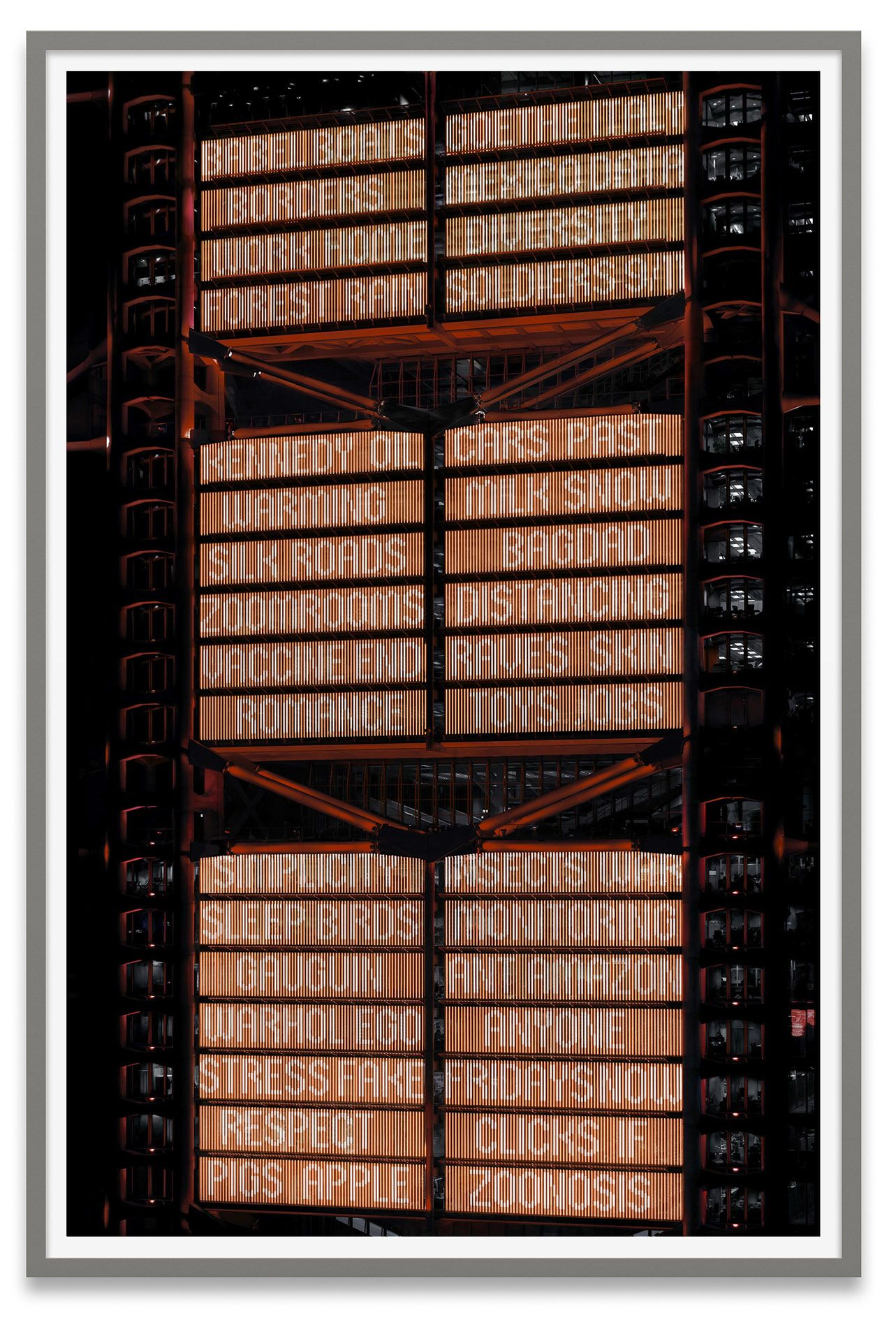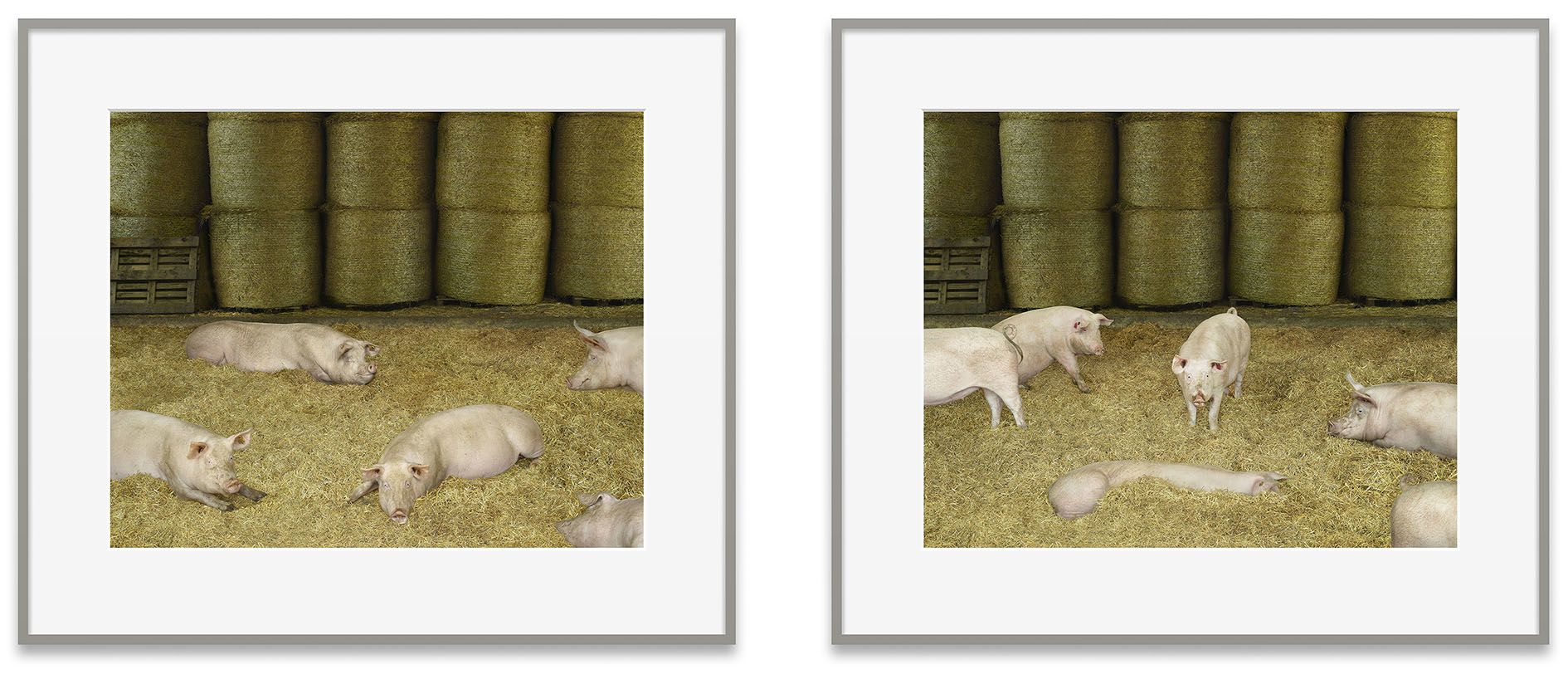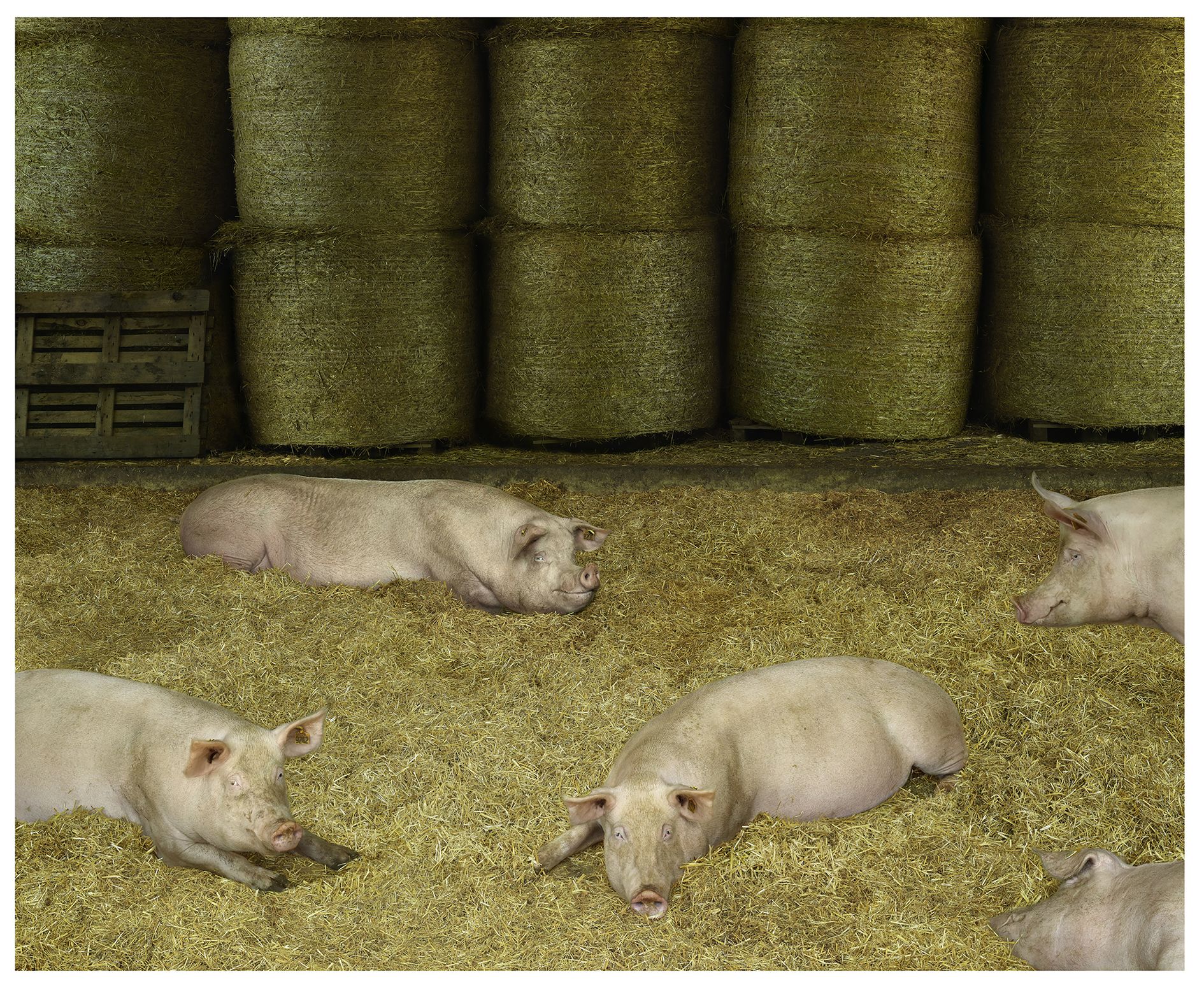The monumental photograph Kreuzfahrt (Cruise) (2020) shows a colossal cruise ship still in the process of being constructed. Here is a human habitation atomized into a modernist grid, a hulking structure that travelers choose to inhabit temporarily, as a form of leisure. In an age of urban overcrowding, migration, and an ongoing pandemic, does the cruise ship represent a spirit of adventure, a longing for isolation or a need for anonymity? The composition, which despite the immense size of the photographic print doesn’t reveal the full scale of the cruise ship, brings to mind a vast minimalist sculpture.
Kreuzfahrt (Cruise) is reminiscent of Gursky’s iconic work Paris, Montparnasse (1993). For an in-depth look at how the artist’s depiction of architecture and use of pictorial space evokes a sense of time or duration, and how Gursky has responded to both the art of cinema and the omnipresence of smartphones, see our online exhibition Space is Time.
